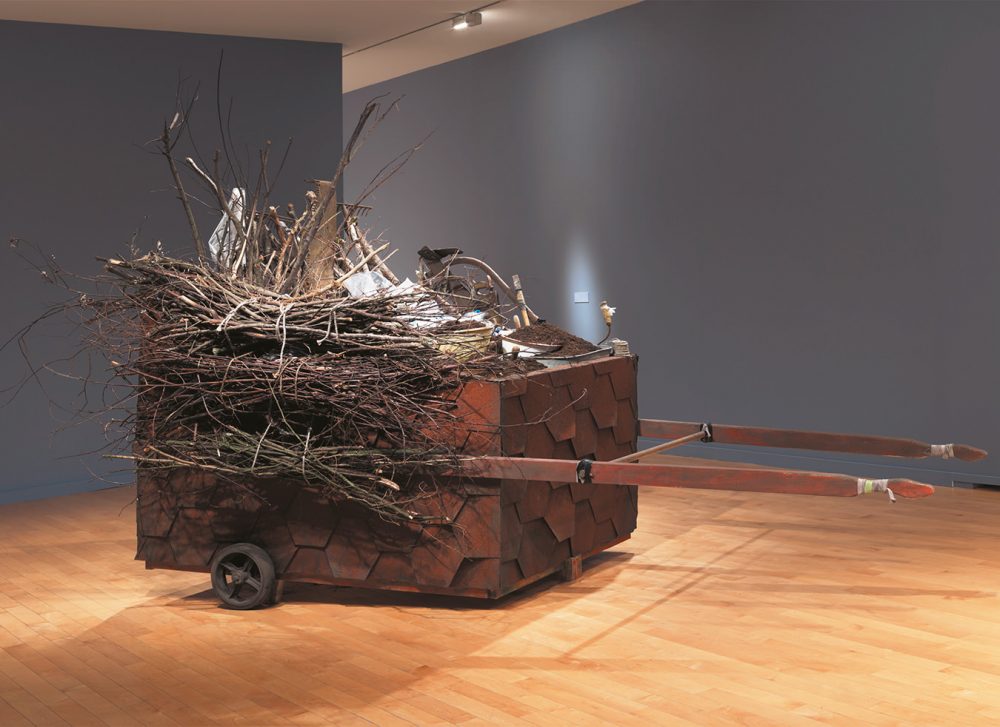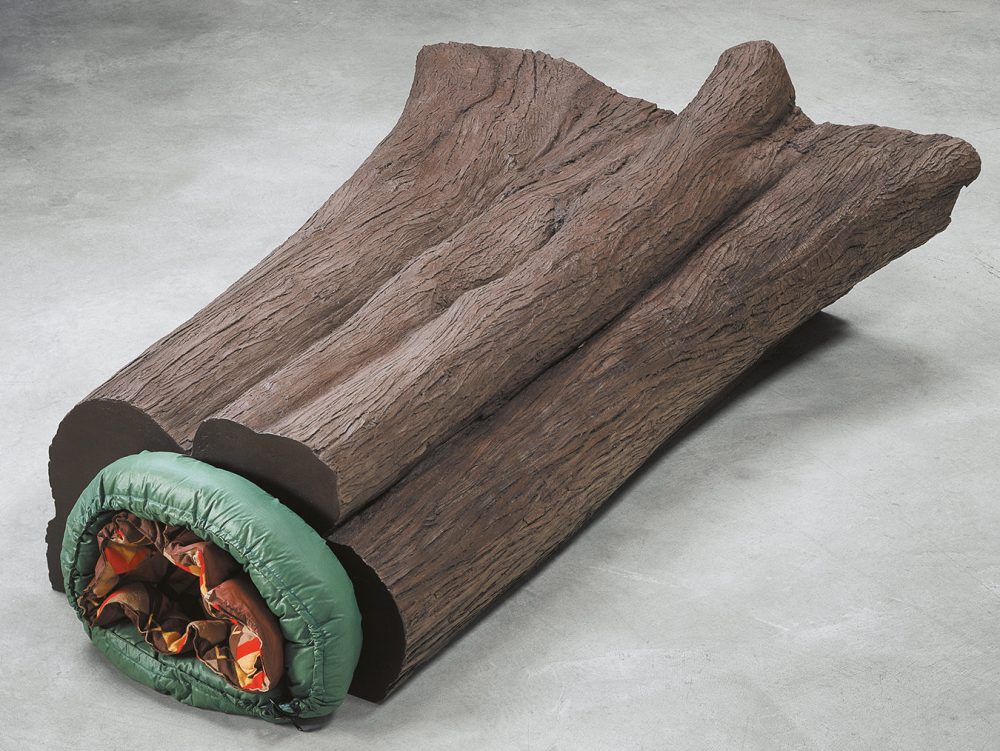As residents of British Columbia, we all know the feeling of wilderness and solitude. On any given afternoon, stepping into Stanley Park will immediately transport you to another world—one where trees overtake skyscrapers. Cross the Lions Gate Bridge to the North Shore and the city bustle is silenced. When I lived in New York, my mind often wandered to Stanley Park, and at times I longed to be alone on the Capilano hiking trails. New York was a place where the throngs of population made me yearn for the serene isolation of home.
This fascination with our province’s unique landscape and the sense of freedom it offers is certainly not a new one—but no one has ever been quite as adept at capturing the essence of our region as Emily Carr. Her haunting paintings take us into the forests—their glow reaching out to us as if from somewhere both deep within and beyond the canvas. For Carr, the wilds of British Columbia were the ultimate refuge. It’s fitting then that Liz Magor, a contemporary female artist with roots in the exploration of identity and retreat, was one of four artists chosen to have a “conversation” with Carr, B.C.’s most famous female artist, for the Vancouver Art Gallery’s “In Dialogue with Carr” exhibition, on until January 2011.
My own dialogue with Magor is done over the phone; I reach her while she’s on retreat at her Cortes Island home, where she lives and works when not in Vancouver. I imagine her surrounded by tall trees and rocky beaches, and as the interview begins, it strikes me that Magor and Carr have myriad in common. I ask Magor if she feels a connection. “[Carr] was very rugged and independent,” she says. “I understand that. I’ve had a life on the coast, an understanding of pioneers.” Magor lived most of her childhood in Prince Rupert, and later attended the University of British Columbia before going on to further her studies in New York. She finished her artistic training back in Vancouver, lived in Toronto for a little over a decade, then returned to B.C. again, where she has stayed.
Anyone familiar with Magor’s recent work knows of her appreciation for materials and her fascination with nature and refuge. Her 1999 sculpture Burrow, which juxtaposes plush sleeping bags protruding from the narrowly hollowed-out centre of a gypsum-cast log, is something of a proverbial rabbit hole, squeezing out the outside world. I ask Magor if Burrow is meant to make us look at the forest as the last place of refuge—a last resort. She explains that Burrow, along with another work entitled Hollow, are both meant for us to examine our need to retreat and to ask “how far would we go in our imagination to escape the anxiety caused by being with others.” These are the types of issues Magor relates to Carr, too. “She was very solitary and she had to fashion her own version of society. I was interested in how she concocted her own existence, and how much aloneness she required.”
Magor’s Beaverman, the piece currently on display as part of her dialogue with Carr, was first made in 1977. The artist admits she was reading Samuel Beckett at the time and was trying to figure out as a young adult how she was going to get through life. “You know, an option is to do it yourself,” she says. Beaverman is a cart-like structure with logs, twigs and plastic bottles filled with tap water piled on top, and it has the capacity for someone to live inside it. The structure was destroyed in 1980, but Magor chose to rebuild it for “In Dialogue with Carr”, though the decision did not come immediately. Magor originally wasn’t sure if she would even participate in the exhibition at all.
“At first I thought I wouldn’t respond to the pairing. I didn’t get involved with [Carr’s] work that much. But as I walked the space I thought, what is Emily Carr? The solution came because I understood her ability to live in the rough,” Magor says. For her, Beaverman was a fit because of its similarity to the caravan that Carr lived in, alone, during the later years of her life. A rudimentary and transportable shelter, Beaverman suggests itself to those who might feel the need to extricate themselves from society. But the piece doesn’t just allude to Carr’s existence, it also parlays into Magor’s own interests in the psychology of society. “I think about a lot of things when I make the work. I’m trying to describe the complexity of being a person here and now, at my age and of my gender.”
In many ways, Carr struggled with similar questions, yet her powerful imagery made her one of our region’s most iconic artists. Liz Magor, it seems, is becoming one too.











